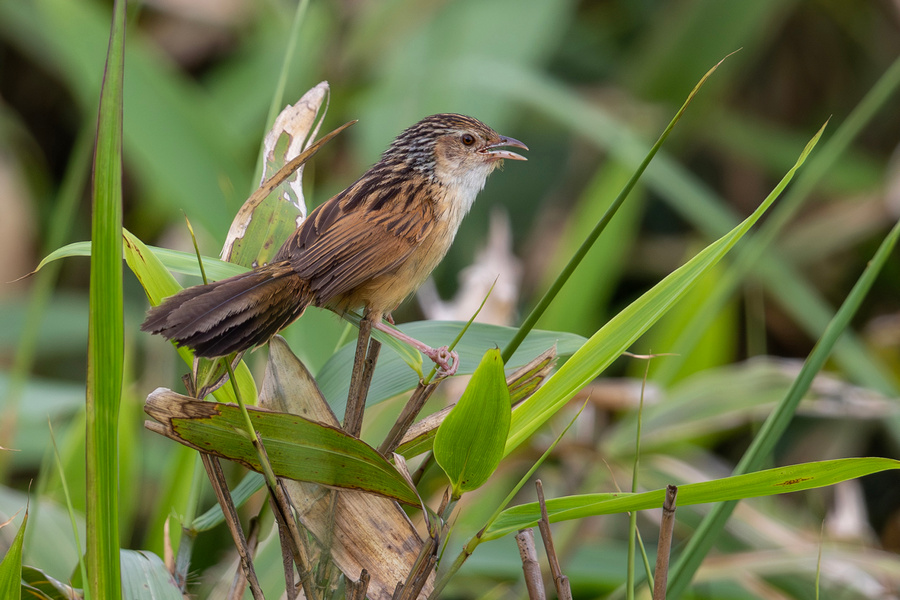
Matthew Kwan is a birder, bird guide, and wildlife photographer based in Hong Kong. He has been writing a birding blog ‘As the Crow Flies’ birding in Hong Kong and his travels since late 2014. His passion for birds started at the age of six, where he saw his first Common Kingfisher in an urban park and was hooked ever since. He is currently a member of the record committee for the Hong Kong Bird Watching Society. He lives with his wife and a cat – both prefer insects over birds.
Of the 584 species of birds on the official Hong Kong bird list, the Chinese Grassbird has always intrigued me, both the story behind its discovery in Hong Kong, and its limited global distribution veiled with mystery.
The Chinese Grassbird (Graminicola striatus) has a historical range extending from Hainan Island, Myanmar, Thailand, to Vietnam. Currently, there are only two countries where they are known to occur outside of China, that being Myanmar, where they were rediscovered in 2012 by James Eaton, and subsequently in Cambodia in 2013 by Simon Mahood and Jonathan Eames (Eaton, Mahood & Eames, 2014). The rest of modern-day records lead back to southern China. Zheng et al. (2021) reported in their updated status of the Chinese Grassbird’s status in China that the bird was found in 14 sites throughout Guangdong and Guangxi since 2016, thanks to increased search efforts, and the results certainly make Southern China a global stronghold for this species. That said, with its limited global distribution, the Chinese Grassbird is listed as Near-Threatened by the IUCN.
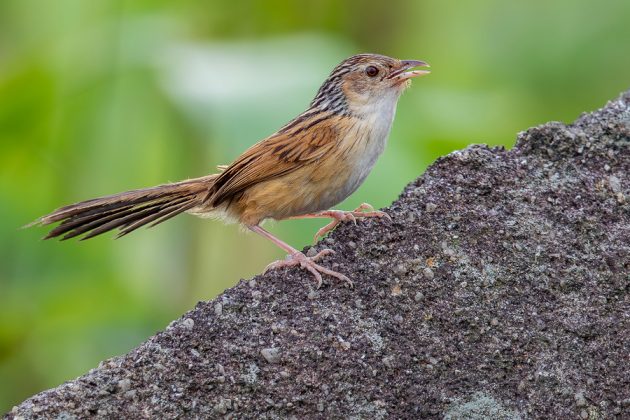
Hong Kong was perhaps the most well-known site for this species in the past before it was rediscovered in Myanmar, and was the only place where birders stood a good chance of finding this skulking bird for nearly a century. Knowing this, I was always quite proud of this fact growing up, and always had a bit of a soft spot for this species, which almost represented us in a way, since we don’t really have any endemic species of our own in Hong Kong. My first encounter with this species was back in the early 2000s, when my dad and I followed instructions from more experienced birders to Tai Mo Shan, and in the thick fog a very vocal and quite stout-looking bird perched on top of the short grass, with a very messy longish looking tail that occasionally cocks upwards. The fog obscured most of its plumage colours, but it certainly made it that much more mysterious for a then-young birder.
The Chinese Grassbird discovery in Hong Kong was in itself quite an extraordinary tale. For many years, birders visiting the grassland of Tai Mo Shan have noted a large prinia-like bird up there, and for many years they were always assumed to be Brown Prinias, quite likely birders were seeing it in thick fog (as it often is up on Tai Mo Shan) like I did and couldn’t tell what it was exactly. It wasn’t until 1982 that a bird was finally caught in a mist-net by David Melville, then Executive Director of WWF (HK), and the true identity of the ‘mystery prinia’ was finally revealed. Since then, the Chinese Grassbird has been found in various locations around Hong Kong.
The Chinese Grassbird, as its name suggest,s is a grassland specialist, but unlike those found in Myanmar and Cambodia, where they are found in tall grassland by lakes and marshes, the Chinese Grassbird in Hong Kong and South China have a strong preference for hillside grassland between 113m – 963m asl. A survey conducted by the Agricultural, Fisheries and Conservation Department of Hong Kong in 2012 stated 11 sites with Chinese Grassbird records around the New Territories and Lantau Island (So et al., 2012).
There are two things to note if one wishes to look for the Chinese Grassbird in Hong Kong: location and season. Hong Kong’s hillsides have undergone massive forest regeneration within the last century, with most hilly shrublands transforming into secondary closed-canopy forest. As a result, most grassland habitats are now restricted to higher elevations; therefore, you are more likely to find Chinese Grassbirds around hillsides from 300m asl or above.
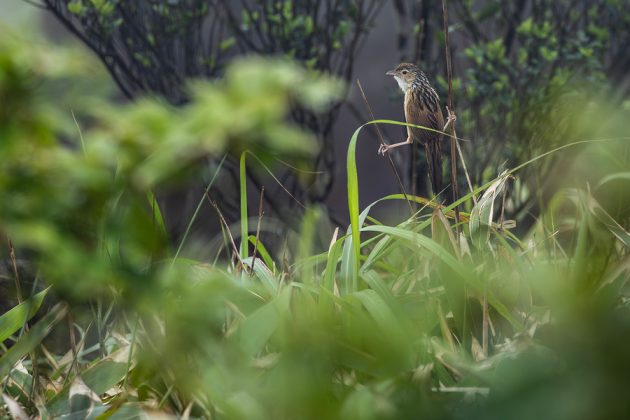
The few traditional hotspots for them are Tai Mo Shan (the tallest mountain in Hong Kong), Kowloon Peak, Ma On Shan, Pat Sin Leng, Robin’s Nest, Sunset Peak, and Lantau Peak. I personally find Tai Mo Shan to be the most accessible site, as you can take a taxi or drive up to the top gate and follow the Maclehose Trail section 8 to the upper parts of the mountain. It only takes around 20 minutes before you start to go into ‘grassbird territory’. If you don’t see them there, you can follow the trail all the way towards Sze Fong Shan, where they are also present. Pat Sin Leng is also an excellent area to search for the Chinese Grassbird. Despite the grueling hike up, birders can hike up towards Ping Fung Shan from the trail entrance at Hok Tau Reservoir. From there, you can either continue towards Wong Leng and Pat Sin Leng or return the same way. Another area that requires a tough hike is Sunset Peak on Lantau Island. Birders usually enter the trail at Pak Kung Au and follow the Lantau Trail section 2 up towards Sunset Peak and back. It only takes around 1.5km before you start getting to suitable habitats, but the climb is quite steep.
While the Chinese Grassbird is a resident in Hong Kong and is present all year round, birders will likely find this skulking species to be extremely difficult to track down outside of their breeding season. I personally find April and May to be the easiest time to look for them, as that’s when they are most vocal, and birders can easily locate the singing birds, which often perch out on the top of the tall grass or dwarf bamboos, occasionally even short trees or rocky outcrops. The Chinese Grassbird is not the best songster to say the least, their song if heard is a jumbled medley of a few musical notes with a lot of raspy churrs added in between, their repeated raspy and harsh ‘chewee’ calls are far easier to recognise, but not at all easy to the ear. By June, they are not as vocal, but you may well see nesting pairs busy bringing food back to their nest, food items that I have observed include various arthropods such as caterpillars and spiders.
While Hong Kong currently remains a stronghold for this species, habitat succession from grassland to shrubland and forest may well threaten the Grassbird’s status in Hong Kong. As the treeline gets higher, the preferred habitat for the Chinese Grassbird decreases. The good news is that almost all the suitable habitats for Chinese Grassbirds in Hong Kong lie within protected country park areas. Hopefully, with appropriate habitat management, their long-term survival here can be secured.
References:
Eaton, J. A., Mahood, S. P., & Eames, J. C. (2014). Chinese Grassbird Graminicola striatus in South-East Asia: lost, forgotten and re-found. Birding Asia, 22, 19-21.
https://www.researchgate.net/publication/274832254_Chinese_Grassbird_Graminicola_striatus_in_South-East_Asia_lost_forgotten_and_re-found
So, I. W. Y., Wan, J. H. C., Lee, W. H., & Cheng, W. W. W. (2012). Study on the distribution and habitat characteristics of the Chinese Grassbird Graminicola striatus in Hong Kong. Hong Kong Biodiversity, 22, 1-9.
https://bih.gov.hk/filemanager/newsletter/en/upload/25/IssueNo22.pdf
Zheng, X., Lewthwaite, R., Martinez, J., Yu, Y. T., Liu, Y., Yang, L., & Chan, B. P. L. (2021). Distribution and status updates of Chinese Grass-babbler Graminicola striatus in China: Implications for its global conservation status. Global Ecology and Conservation, 26, e01463.
https://www.sciencedirect.com/science/article/pii/S2351989421000135





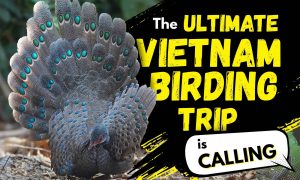




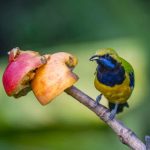
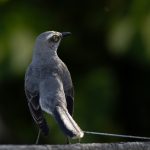

My first reaction: that’s not a bird that would entice me to go to Hong Kong, hardly a pitta… but at second view it’s quite an interesting little bird. The colouration may be browns and buffs but very intricate. The article itself is very interesting too, very enjoyable.
My first glance at the Chinese Grassbird reminded me of two wren species: Sedge Wren (Cistothorus platensis) and Marsh Wren (C. palustris). Both wrens have tails that they cock-up and the Sedge Wren’s tail is very superficially like the Chinese Grassbird – just way shorter. Also, the grassbird’s coloring, face, eye and bill look very wren-link. I find this Chinese Grassbird to be a very attractive in the same way that wrens and sparrows appeal to me. Like Peter’s comment above, it is not a bird that would easily come to the attention of birders not from Hong Kong. Thanks for making this post and for the optimism about the grassbird’s future in Hong Kong.